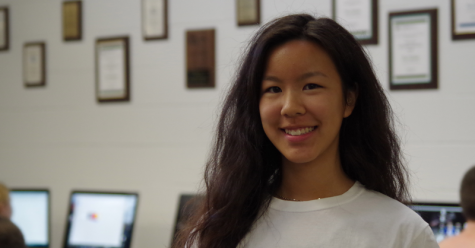Chinese New Year is still exciting as a teen
The grand feast on Chinese New Year’s Eve includes various traditional Chinese and Taiwanese foods.
January 30, 2017
When I was younger, Chinese New Year really meant two things to me: red envelopes and traditional Chinese cake. Although I never knew when exactly the holiday was since the date is based on the lunar calendar, the telltale signs occurred when my parents would set out a tower of clementines for good fortune and hang up red and gold cardboard decorations. As it approached, I would anticipate the money and food associated with the holiday.
The red envelopes, called “hong bao” in Mandarin, were always decorated with gold Chinese characters and filled with crisp bills from my parents and grandparents. After performing a silly bowing ceremony before our parents that we started when we were little, my brother and I would ask for the hong bao and smile at our earnings for the new year.
This all happened after the grand feast of traditional Chinese and Taiwanese foods, which always, and still does, conclude with my favorite dish: “nian gao.” I’ve always considered it a special treat because my mom only makes it for Chinese New Year; made with glutinous rice flour and red bean paste, nian gao translates to “year cake.” The chewy consistency, for the average American palate, can only be compared to the texture of mochi but slightly firmer. Nian gao is one of the many foods that is thought to bring luck and prosperity for the coming year, something that is really emphasized in regards to the holiday.
East Asians, or at least my family, don’t play around when it comes to food and traditions associated with eating. For our big dinner, which usually takes place on Chinese New Year’s Eve, my mom makes an enormous spread of food that includes a few key dishes. There is always a whole fish, usually steamed, that is associated with prosperity because the Chinese word for “fish” sounds like the word for “extra”. It’s important that the fish isn’t flipped over when eating it since there is a superstition that it could lead to overturned fishing boats. Though capsized boats aren’t a huge concern anymore, the general idea is that an incorrectly eaten fish can result in bad luck.
Another shot at good fortune comes in the form of a dumpling. Since the shape of the dumpling looks similar to “yuanbao”, which is an old Chinese currency, it’s believed that they can bring prosperity. My mom takes it one step further by hiding a yuanbao-shaped carrot slice in one of the dumplings so that whoever finds it in their dumpling has extra luck.
Even as I’ve come to appreciate the intangible spirit of Chinese New Year and the cultural connection to my background, the thought of hong baos and nian gao still unfailingly fills me with excitement year after year.





